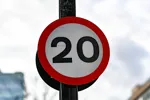During research for Leeds University, consultant David Keenan discovered that at three sites with Gatso cameras, taking one picture of speeding cars over a short distance, the accident rate had gone up rather than down.
However, there had been a marked decrease in crashes on roads in Nottingham monitored by digital cameras that constantly follow cars over a long period and work out average speeds.
In his report 'Speed cameras – the true effect on behaviour', Keenan concluded: 'The installation of a speed camera system does not automatically imply that road conditions will improve at a location. The influencing effect of the camera on driver behaviour can create new problems such as erratic braking and acceleration profiles and distraction of drivers from the traffic flow. In some cases this may lead to an increase in accident rates.'
Keenan found that single Gatsos 'failed in their purpose' with drivers often braking heavily 50 metres before the site. When there were two cameras one kilometre apart, there was less last minute braking or sudden acceleration, although he advocated Nottingham's hi-tech number plate reading approach as the best solution.
The Government claims its own research shows a reduction in serious accidents and deaths by 47% in areas where speed cameras have been installed.
















Login to comment
Comments
No comments have been made yet.